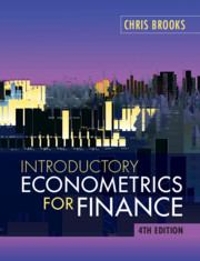Brooks and Persand (2001a) examine the evidence for a day-of-theweek effect in five Southeast Asian stock markets:
Question:
Brooks and Persand (2001a) examine the evidence for a day-of-theweek effect in five Southeast Asian stock markets: South Korea, Malaysia, the Philippines, Taiwan and Thailand. The data, obtained from Primark Datastream, are collected on a daily close-to-close basis for all weekdays (Mondays to Fridays) falling in the period 31 December 1989 to 19 January 1996 (a total of 1,581 observations). The first regressions estimated, which constitute the simplest tests for dayof-the-week effects, are of the form
(10.4)
where rt is the return at time t for each country examined separately, D1t is a dummy variable for Monday, taking the value 1 for all Monday observations and zero otherwise, and so on. The coefficient estimates can be interpreted as the average sample return on each day of the week. The results from these regressions are shown in Table 10.1.
Table 10.1 Values and significances of days of the week coefficients Briefly, the main features are as follows. Neither Thailand nor the Philippines have significant calendar effects; both Taiwan and Malaysia have significant positive Monday average returns and significant negative Tuesday returns; Taiwan has a significant Thursday effect.
Dummy variables could also be used to test for other calendar anomalies, such as the January effect, etc. as discussed above, and a given regression can include dummies of different frequencies at the same time. For example, a new dummy variable D6t could be added to equation (10.4) for ‘April effects’, associated with the start of the new tax year in the UK. Such a variable, even for a regression using daily data, would take the value 1 for all observations falling in April and zero otherwise.
If we choose to omit one of the dummy variables and to retain the intercept, then the omitted dummy variable becomes the reference category against which all the others are compared. For example consider a model such as the one above, but where the Monday dummy variable has been omitted (10.5)
The estimate of the intercept will be on Monday, on Tuesday and so on. will now be interpreted as the difference in average returns between Monday and Tuesday. Similarly, can also be interpreted as the differences in average returns between Wednesday, …, Friday, and Monday.
This analysis should hopefully have made it clear that by thinking carefully about which dummy variable (or the intercept) to omit from the regression, we can control the interpretation to test naturally the hypothesis that is of most interest. The same logic can also be applied to slope dummy variables, which are described in the following section.
Step by Step Answer:






